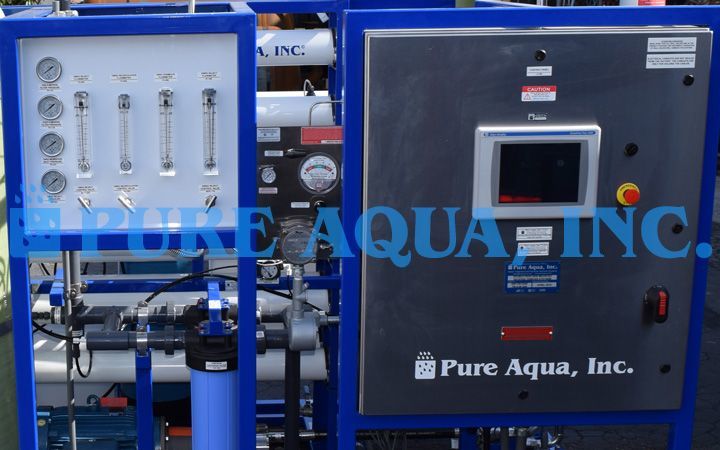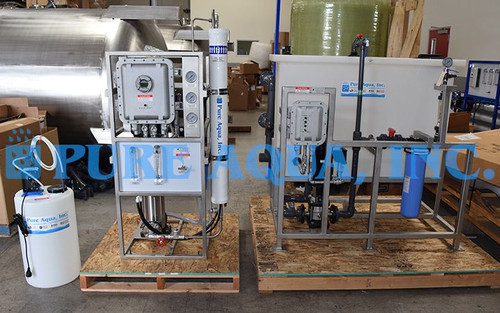In application industries like chemical plants or oil & gas companies, it is crucial to ensure that the water system abides by the regulations of classified areas. With industries that are comprised of classified environments, water treatment systems must be adequately built to withstand and comply with hazardous environments.
This system is designed to abide by the electrical regulations of classified areas. One form of achieving the regulations is by structuring the electrical system of the product with low energy supplies to avoid hazardous interactions from occurring due to accidentally shorted components or wiring. Isolating the electrical system with a durable enclosure is an important measure to take into consideration. As pressure changes in the atmosphere, an enclosed and purged electrical system will preserve the pressure inside the case and mitigate potentially dangerous reactions. With applications such as offshore stationaries and oil rigs, a seawater reverse osmosis system would be an ideal solution for producing freshwater onsite.
[custom-specifications]
Depending on where the system is stationed, there are certain requirements that may need to be applied when constructing the system. An example of location requirement is when a system is placed in a Class 1 Division 1 area versus Class 1 Division 2 area. Both have requirement restrictions; however, the regulatory code classification differs due to the varying degrees of hazard. Class 1 Division 1 includes the constant presence of gases that can be explosive while Class 1 Division 2 refers to temporary or insufficient presence of gases susceptible to combustion. Therefore, the requirements for Class 1 Division 1 are much more extensive. Class 1 Division 2 on the other hand, is the class that is most commonly addressed. In order to avoid complications, it would be best advised to place the system in an unclassified or less classified area to avoid potential danger and the need for implementing the necessary requirements.
[/custom-specifications]
[custom-features]
Seawater Reverse Osmosis System:
Seawater Reverse Osmosis system is a water treatment system that utilizes a filtration process to remove 99.4% of salt contaminants. The system is comprised of a reverse osmosis process in which seawater is pressurized through an RO membrane. The system generates a permeate stream of filtered water and a reject stream of concentrated contaminants collected. This process produces one of the most purified forms of freshwater for the use of a range of applications
Completed Projects:
[custom-usage]
- Isolates pressure of electrical system
- Prevents short circuit combustion
- Fulfills electrical code requirements
- Secures electrical system
[/custom-usage]
-
Love this!
Could not be more satisfied with the results of this reverse osmosis system. Terrific performance to this day
- Related Project1:
- https://pureaqua.com/explosion-proof-double-pass-swro-system-9000-gpd-indonesia/
- Related Project2:
- https://pureaqua.com/explosion-proof-brackish-reverse-osmosis-device-0-7-m3-hr-bolivia/
- Related Project3:
- https://pureaqua.com/explosion-proof-reverse-osmosis-system/
- Related Project4:
- https://pureaqua.com/explosion-proof-tap-water-reverse-osmosis-system-12000-gpd-usa/
 ENGLISH
ENGLISH ESPAÑOL
ESPAÑOL العربية
العربية PORTUGUÉS
PORTUGUÉS FRANÇAIS
FRANÇAIS













